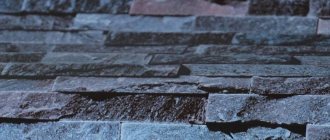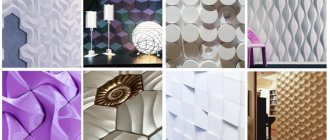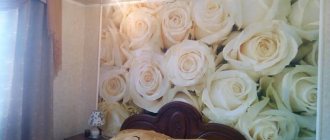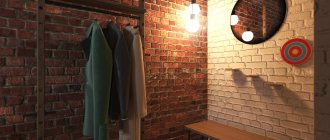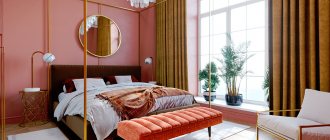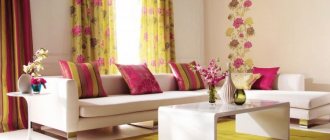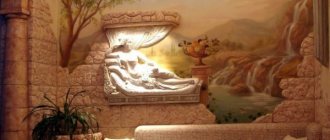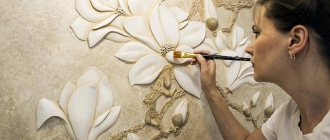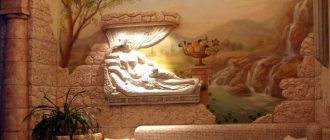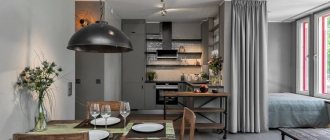Bas-reliefs can roughly be called a three-dimensional image or composition on a surface made of plaster or polymer materials. Bas-reliefs or stucco were popular in the era of luxury among the privileged nobility. This was due to the fact that such manual labor required certain artistic and architectural skills, which not everyone possessed. Now the bas-reliefs have retained their majestic appearance. But you can already do it yourself. The availability of materials and step-by-step instructions for work allow you to create bas-reliefs at home, without resorting to outside services.
Bas-relief in simple words
A three-dimensional image demonstrating individual characters, objects, compositions, abstract scenes can be located both indoors and on the facade.
Usually they occupy either part of the area or the entire surface. Various materials are used in production, it can be clay, gypsum, wood, etc., the main thing is that the material can ultimately be poured into the required form. The name depends on the size of the convexity above the plane; bas-relief (from the French bas-relief - low relief) should protrude no more than half the volume of the image.
Advantages
Since ancient times (in Rome, Byzantium, Greece), this type of building design was used exclusively in palaces, temples and museums.
Thanks to modern technologies, the cost of the material has become much lower and this design has become accessible to everyone. Now you can make real royal bedchambers from your living room.
The bas-relief adds elegance and charm to the interior. With its help, you can bring elements of antiquity into the design or, on the contrary, emphasize the modernity of the decor. Shortcomings or flaws in the space of the apartment are easily hidden with the help of bas-relief, unnecessary protrusions or wires are masked. Plain gray walls will become luxurious and sophisticated.
Types and themes
Art historians distinguish the following types of bas-reliefs:
- Flattened. The size of the projection of the image itself relative to the plane is minimal.
- High relief. On the contrary, very three-dimensional images that stand out on the surface.
- Koylanagryf. The relief itself is deepened, and the sculptural composition protrudes outward.
- Counter-relief. The entire sculptural composition deepens and is drawn inside the plane.
The topic can be as varied as possible. Much depends on the type of room.
In children's rooms, a high relief in the form of a cartoon hero, comic book character or favorite fairy tale is always relevant.
A minimalist style is used in the kitchen or dining room; still lifes with fruits, vegetables or flower baskets will be relevant here.
In the living room and bedroom you can decorate people, animals, events. Mixed media can be used in any space. There are no restrictions here, only your flight of fancy.
DIY techniques for making relief designs
At home, bas-reliefs are made mainly from plastic materials - clay, plaster, paper, salt dough. Standard plastic elements that have lower artistic value are purchased less frequently.
Such decor would look appropriate in the design of the same name, Art Nouveau, Art Nouveau, Baroque, Rococo, Empire.
Made from gypsum plaster
Gypsum and plaster products are created using the following techniques:
- Free plastering of individual elements that are not fixed to the wall. This is the best option for beginners, as the design can be edited several times;
- Plastering models on the wall itself - performed directly on the supporting plane;
- Reverse casting is a complex method in which the model is made using a mold. The good thing about this technique is that it allows you to create many identical parts;
- Flat modeling directly on the wall - some experience is required to work. The finished product is an intricate picture, individual parts of which extend onto the ceiling and go around corners.
This natural material is well suited for creating stucco.
Advice: if the modeling is made from individual elements, they are glued using PVA or acrylic glue.
From clay
Often bas-reliefs are made from colored polymer clay or ordinary clay. Both options require firing in a kiln, followed by mounting on the wall. There is flat and volumetric modeling. Both are performed on a substrate using various shapes of stacks and fingers. The finished item is fired and pasted on the wall. Large paintings are made up of many details. “Botanical” bas-reliefs are popular – voluminous fresh flowers are “rolled” into a layer of clay, a form is placed on top, into which a liquid solution is poured. The result is a flat surface with voluminous plants on it.
Clay is the most accessible material that is suitable even for beginners.
From paper
Creating a three-dimensional painting from papier-mâché is a quick, cheap way. The hardened composition is more durable than gypsum. To complete this you will need paper napkins and PVA glue. These materials are kneaded into a thick mass from which the details of the painting are sculpted. The finished composition is slightly tinted and covered with a layer of paint and varnish.
A paper bas-relief will give your home an original and unique look.
Bas-relief in the form of flowers
One of the most popular themes for wall decoration. Flowers fit perfectly into almost any interior design. It can be several small elements on the wall or a large composition that covers the entire wall; in any case, it will transform your space, adding a special atmosphere to it, giving it coziness and warmth.
Bas-relief in the form of trees
A universal element of the interior is a bas-relief made in the form of a tree or branches that curl over the entire surface. It can be an entire wall, in the form of a dense forest or one lush tree. Or it can occupy only part of the plane in the form of one or several volumetric paintings.
This theme will look great on the ceiling. It always looks elegant and not flashy, but at the same time fills the emptiness of space and gives external comfort.
List of tools for bas-relief
When creating complex elements, professional craftsmen use a huge number of scrapers, spatulas and tools of unusual shapes.
For a novice hobbyist, you will need several tools that will allow you to complete simple parts.
These include:
- Palette knives. They are compact spatulas that differ from each other in width and length;
- Wood cutters. Thanks to them, it is possible to correct minor defects in the image and transform them into streamlined lines;
- A simple pencil for drawing a sketch on the wall surface;
- Tool storage box;
- Film. It is necessary to protect the floor covering;
- Decorative varnish and paint. They are used to impregnate the decoration of individual parts. When choosing, it is important to consider the composition of the mixture.
For example, glazed translucent paint can emphasize the depth of color;
- Set of nails and screws;
- Tile adhesive;
- Pastry syringe with various attachments. Thanks to this device, it is possible to create miniature parts that are later glued to the overall exhibition.
Role in room design
Using various techniques you can create a unique style for any room. This could be a three-dimensional panel in the middle of the living room, or a small painting in the hallway.
Thanks to the play of light and shadows, you can add an even greater effect of sophistication and color. This creates a unique atmosphere in each room. The use of modern materials makes it glow in the dark.
This type of decorative design goes well with any material. And you can safely use different textures when choosing other decorative elements. A win-win option for creating designs in any style.
Thematic focus of volumetric images
The number of bas-relief panels used in an apartment, their parameters and thematic focus depend on the style of the room, as well as its size, purpose and designer’s intentions.
- An abstract pattern on the walls and ceiling will be a wonderful addition to the monotonous surfaces of furniture designed in a minimalist style.
- The bas-relief ceiling with a pattern in the form of intertwined tree trunks and branches looks good. It fits into the interior of any room, complementing it and making it more comfortable and homely.
- In a room with asymmetrical walls, several protruding bas-relief elements in different places in the room and on the ceiling will help visually harmonize the space.
- If the room is dominated by furniture made from natural materials, then it is best to hang a three-dimensional panel made of wood on the wall.
- Small bas-reliefs used near the stove or in the dining area will be an excellent decor for the kitchen interior. They will enliven her space and make it dynamic.
The correct selection of the desired motif will allow you to make sculptural paintings the main accent in the room. Around them it will be possible to create a unique interior that gives peace and tranquility.
Making Tips
First, you need to think about the interior of the room where the bas-relief will be located. Then decide in which part of the space the image will be located and what the final size will be. It is worth not forgetting about lighting, which plays a big role in the perception of the work.
Next comes the development of the sketch. The entire composition will depend on the choice of style and form. The finished drawing is transferred to the wall in real size to see the whole picture. This makes it possible to edit some parts or possibly remove or add something.
Having approved all the details of the bas-relief, you can begin to manufacture it and apply it directly to the part of the plane that you want.
Before applying any material to the wall, the surface is treated with putty. Then prepare the mortar-plaster itself. Its composition tends to dry quickly, so you need to quickly apply the mixture to the surface.
Craftsmen who know all the intricacies of the work can quickly and efficiently transfer your sketch to the required part of the surface. At the same time, observing all the stages in the correct order (drawing all the details, painting technique, drying the parts, primer treatment and further painting).
A bas-relief made using the correct method will serve you for many years, will not have cracks or splinters, and will only be pleasing to the eye.
Surface preparation before applying bas-relief
Bas-reliefs, as a rule, are made on a surface that does not involve paint or wallpaper. This could be plaster or putty. Surface preparation is universal. First you need to level the surface and also get rid of roughness (if this is not implied by your composition). For better adhesion to the surface, it is better to use a primer during preparation. The primer is applied to the wall at least twice.
Materials used
Modern technologies offer us a large number of materials.
The main ones are: gypsum, putty, clay, alabaster and other plastic material. The choice of material depends on the type of room and the surface on which the bas-relief will be made. Cement-based materials are used for facades. They do not deteriorate from moisture.
Gypsum has the opposite properties, so it should only be used in dry interior areas.
In recent years, polyurethane has been gaining popularity. Foamed plastic is easy to handle, affordable, and is resistant to moisture, odors, and even temperature changes.
Coating with paint will provide even more protection against destruction. For the durability of the composition, varnish, glue and various types of primer are used.
Bas-relief technology
When making a bas-relief on a wall with your own hands, you should adhere to a simple technology that can be divided into several small stages.
Stage No. 1: First of all, it is necessary to determine where the bas-relief will be made, as well as its size;
Stage No. 2: Selecting the material from which the bas-relief will be made: plaster, putty, alabaster;
Stage No. 3: Select a sketch or stencil for the future bas-relief;
Stage No. 4: Prepare tools and surface;
Stage No. 5: Transfer the sketch or stencil to the prepared surface;
Stage #6: Direct execution
bas-relief. The application of the sculpting itself requires great concentration and painstakingness. When making a bas-relief, you must remember that in the widest places of the future bas-relief, it is advisable to first fasten, for example, self-tapping screws or self-tapping screws according to the sketch. This creates a framing and strengthening effect to keep your sculpt stable. Cardboard can also serve as a kind of corsac, which simply needs to be modified with plaster or plaster. To obtain a solution, the material is diluted with water and applied to the “imprint” (left by a stencil, if you used one). Each layer is applied only when the previous one has dried. The last layer can be applied with a primer so that your composition does not fall apart;
Stage No. 7: Subsequent finishing if necessary.
Gypsum bas-reliefs
For many years, gypsum has been one of the most popular building materials. It is rarely used in its pure form because it hardens quickly, so when creating a bas-relief, a gypsum plaster mixture is most often used.
From it you can create a magnificent three-dimensional image on the wall, which will delight your eye for many years. Such an interior detail will add more realism than flat paintings.
The subjects of the paintings can be varied, there are no restrictions. It is even possible to install a removable plaster panel into the wall, which can be removed and moved to another room, which will make it possible to change the interior if desired.
Advantages of bas-relief on the wall
No type of decoration can compare in aesthetics with bas-relief. At first glance it attracts attention, looks unusual and interesting. You can create the drawing yourself. The advantages of bas-relief are:
- originality and effectiveness of finishing;
- the ability to disguise wall unevenness;
- the ability to act as a means of zoning a room.
Even more ideas for interior design can be found on the website https://masterinterera.ru/
You can create a bas-relief in the interior with your own hands, and this is another advantage of this type of wall decoration.
If you don’t want to glue wallpaper, and painting the walls doesn’t seem like an interesting enough way to decorate, complement it with a bas-relief, which can be created from various materials:
- gypsum;
- plasters;
- clay.
The base can be made of wood or metal - they are poured or processed, creating original compositions on the wall.
Decorative bas-reliefs
This type of wall decoration will never go out of fashion - it is one of the most ancient ways of decorating rooms and various surfaces. With the right location and view, the overall style of the room begins to look sophisticated and will harmonize perfectly with any type of design.
A variety of bas-relief elements will help transform your interior. Floral themes have gained particular popularity. They are applicable in almost all styles and spaces. Also, do not forget that the bas-relief goes well with almost any finishing material.
DIY plaster mold
Not all forms can be purchased in the store. However, if the desired form is not found, you can make it yourself. For example, there is a bird or some kind of animal in the picture. You can buy the figurine or toy you need and place it in a plywood box. Fill its contents with liquid silicone, which is sold in all hardware stores. A day later, after the silicone has dried, the box is disassembled, the figurine is taken out and that’s it. The required form is ready. The alabaster mixture is poured into it well. Moreover, silicone molds do not need to be lubricated, unlike baby beads made of plastic material. The latter should be lubricated with vegetable oil.
To prepare the alabaster mixture, take: gypsum - 2 parts, water - 1 part. The prepared mixture is poured into molds and waits for about a day to dry completely.
Bas-relief with a butterfly in the bedroom
Bas-relief with landscape
See alsoBamboo in the interior - use cases
Modern bas-reliefs
Three-dimensional images are usually associated with ancient times and styles of ancient centuries, so bas-relief is often used to give a home the style of a palace. But in modern interiors it also looks quite harmonious.
Thanks to new technologies and a huge selection of materials, you can make absolutely any figure, image, landscape. It can also be a varied wall pattern in any color or painting. Therefore, even in loft spaces, bas-relief can be very appropriate.
What is important here is the designer’s idea and his competent decision in the arrangement of all decorative elements.
